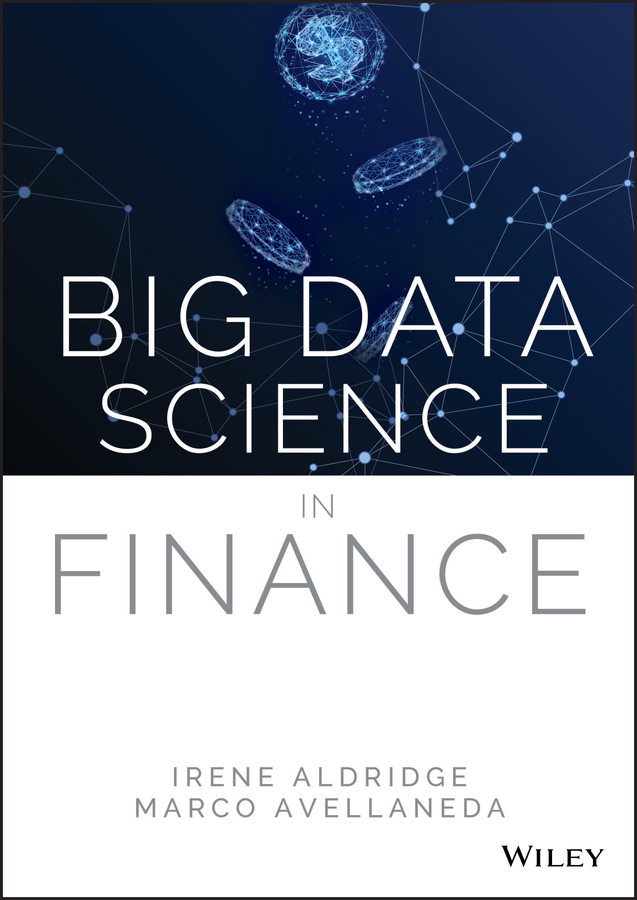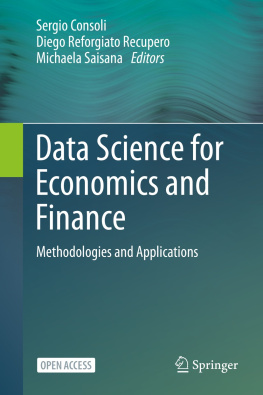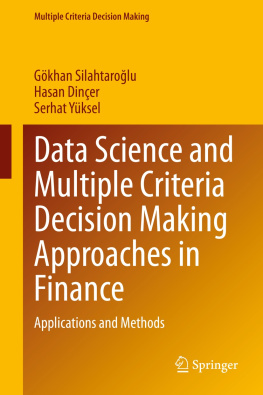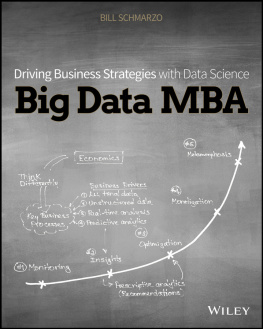
Table of Contents
List of Tables
- Chapter 3
- Chapter 4
- Chapter 5
- Chapter 6
- Chapter 7
- Chapter 8
- Chapter 9
List of Illustrations
- Chapter 1
- Chapter 2
- Chapter 3
- Chapter 4
- Chapter 5
- Chapter 6
- Chapter 7
- Chapter 8
- Chapter 9
Guide
Pages
Big Data Science in Finance
By
Irene Aldridge
Marco Avellaneda

Copyright 2021 by Irene Aldridge and Marco Avellaneda. All rights reserved.
Published by John Wiley & Sons, Inc., Hoboken, New Jersey.
Published simultaneously in Canada.
No part of this publication may be reproduced, stored in a retrieval system, or transmitted in any form or by any means, electronic, mechanical, photocopying, recording, scanning, or otherwise, except as permitted under Section 107 or 108 of the 1976 United States Copyright Act, without either the prior written permission of the Publisher, or authorization through payment of the appropriate per-copy fee to the Copyright Clearance Center, Inc., 222 Rosewood Drive, Danvers, MA 01923, (978) 7508400, fax (978) 6468600, or on the Web at www.copyright.com. Requests to the Publisher for permission should be addressed to the Permissions Department, John Wiley & Sons, Inc., 111 River Street, Hoboken, NJ 07030, (201) 7486011, fax (201) 7486008, or online at www.wiley.com/go/permissions.
Limit of Liability/Disclaimer of Warranty: While the publisher and author have used their best efforts in preparing this book, they make no representations or warranties with respect to the accuracy or completeness of the contents of this book and specifically disclaim any implied warranties of merchantability or fitness for a particular purpose. No warranty may be created or extended by sales representatives or written sales materials. The advice and strategies contained herein may not be suitable for your situation. You should consult with a professional where appropriate. Neither the publisher nor author shall be liable for any loss of profit or any other commercial damages, including but not limited to special, incidental, consequential, or other damages.
For general information on our other products and services or for technical support, please contact our Customer Care Department within the United States at (800) 7622974, outside the United States at (317) 5723993, or fax (317) 5724002.
Wiley publishes in a variety of print and electronic formats and by print-on-demand. Some material included with standard print versions of this book may not be included in e-books or in print-on-demand. If this book refers to media such as a CD or DVD that is not included in the version you purchased, you may download this material at http://booksupport.wiley.com. For more information about Wiley products, visit www.wiley.com.
Library of Congress Cataloging-in-Publication Data is available:
ISBN 9781119602989 (Hardcover)
ISBN 9781119602996 (ePDF)
ISBN 9781119602972 (ePub)
Cover Design: Wiley
Cover Images: Anton Khrupin anttoniart/Shutterstock, Sunward Art/Shutterstock
Preface
Financial technology has been advancing steadily through much of the last 100 years, and the last 50 or so years in particular. In the 1980s, for example, the problem of implementing technology in financial companies rested squarely with the prohibitively high cost of computers. Bloomberg and his peers helped usher in Fintech 1.0 by creating wide computer leasing networks that propelled data distribution, selected analytics, and more into trading rooms and research. The next break, Fintech 2.0, came in the 1990s: the Internet led the way in low-cost electronic trading, globalization of trading desks, a new frontier for data dissemination, and much more. Today, we find ourselves in the midst of Fintech 3.0: data and communications have been taken to the next level thanks to their pure volume and 5G connectivity, and Artificial Intelligence (AI) and Blockchain create meaningful advances in the way we do business.
To summarize, Fintech 3.0 spans the A, B, C, and D of modern finance:
Next page













